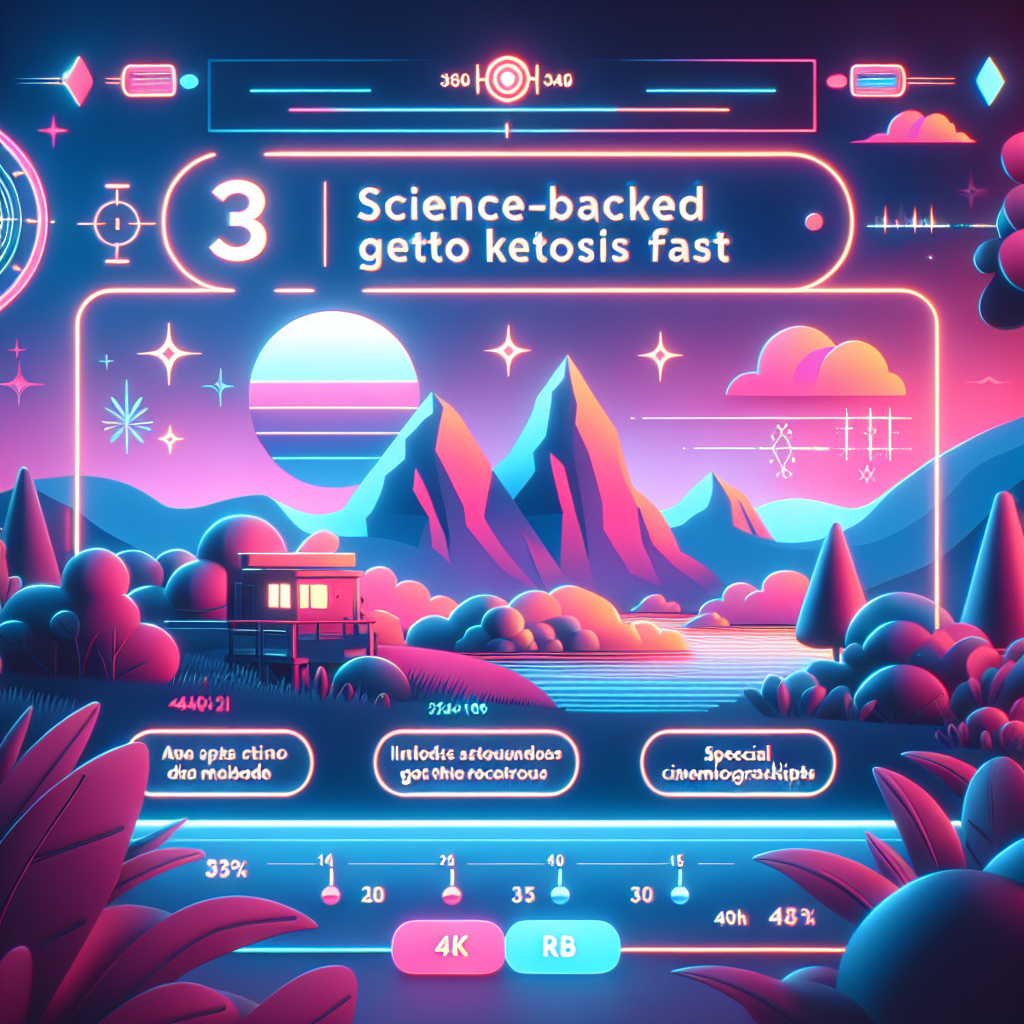
-
Table of Contents
Get Into Ketosis REALLY FAST With These 3 Science Backed Methods

The ketogenic diet, or keto diet, has gained significant popularity in recent years due to its potential benefits for weight loss, diabetes management, and even neurological health. The goal of the keto diet is to enter a metabolic state known as ketosis, where the body burns fat for fuel instead of carbohydrates. However, transitioning into ketosis can sometimes be a challenging process, often referred to as the “keto flu”. This article will explore three science-backed methods to help you get into ketosis really fast, minimizing discomfort and maximizing benefits.
1. Increase Your Physical Activity
Physical activity is a proven method to help your body enter ketosis faster. When you exercise, your body depletes its glycogen stores. Normally, these would be replenished when you eat carbs, which are broken down into glucose and then converted into glycogen. However, if your carb intake is low enough, your body is forced to use alternative fuel sources, such as fat, to produce energy. This process can help you get into ketosis faster.
Several studies have shown the benefits of exercise for ketosis. For instance, a study published in the Journal of Applied Physiology found that physical activity can increase ketone levels. Another study in the American Journal of Clinical Nutrition reported that athletes who follow a keto diet burned about 230% more fat during exercise than those on a high-carb diet.
However, it’s important to note that while exercise can help you get into ketosis faster, it’s not without risks. Overdoing it can lead to fatigue, dehydration, and electrolyte imbalances. Therefore, it’s crucial to balance your exercise routine with adequate hydration and nutrition.
Here are some tips to incorporate exercise into your keto diet:
- Start with low-intensity exercises like walking or yoga, especially if you’re new to working out.
- Gradually increase the intensity of your workouts as your body adapts to the diet.
- Stay hydrated and replenish your electrolytes after exercising.
2. Limit Your Carb Intake
Limiting your carb intake is the most straightforward and effective way to get into ketosis. When you consume fewer carbs, your body has to look for other sources of energy, and it turns to fat, producing ketones as a byproduct.
Research supports the effectiveness of a low-carb diet for inducing ketosis. A study published in the Archives of Internal Medicine found that a low-carb diet led to greater weight loss and better cholesterol levels than a low-fat diet. Another study in the Journal of Nutrition and Metabolism reported that subjects on a low-carb diet entered ketosis within two days.
However, drastically reducing your carb intake can lead to side effects, such as fatigue, headaches, and constipation. Therefore, it’s important to gradually decrease your carb intake and monitor your body’s response.
Here are some tips to limit your carb intake:
- Eliminate high-carb foods from your diet, such as bread, pasta, and sugary drinks.
- Include plenty of low-carb vegetables in your meals.
- Monitor your carb intake using a food diary or an app.
3. Increase Your Healthy Fat Intake
Increasing your intake of healthy fats can help you get into ketosis faster. Consuming fats increases the levels of ketones in your body, helping you enter ketosis. Moreover, fats can help you feel full, reducing hunger and cravings.
Research supports the benefits of a high-fat diet for ketosis. A study published in the Journal of Clinical Investigation found that a high-fat diet increased ketone levels and helped people get into ketosis. Another study in the American Journal of Clinical Nutrition reported that a high-fat, low-carb diet led to significant weight loss and improved heart health markers.
However, it’s important to choose healthy fats, such as monounsaturated and polyunsaturated fats, and avoid unhealthy fats, such as trans fats and saturated fats. Unhealthy fats can increase your risk of heart disease and other health problems.
Here are some tips to increase your healthy fat intake:
- Include foods rich in healthy fats in your diet, such as avocados, nuts, seeds, and fatty fish.
- Use healthy oils for cooking, such as olive oil and coconut oil.
- Avoid processed foods that are high in unhealthy fats.
Conclusion
Getting into ketosis doesn’t have to be a daunting task. By increasing your physical activity, limiting your carb intake, and increasing your healthy fat intake, you can enter ketosis faster and start reaping the benefits of the keto diet. However, it’s important to remember that everyone’s body is different, and what works for one person may not work for another. Therefore, it’s crucial to listen to your body and adjust your approach as needed. Always consult with a healthcare professional before starting any new diet or exercise program.